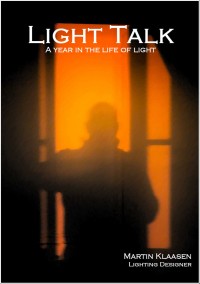The week that was 18-22 July 2016
Singapore, Weekend 23-24th July 2016
A busy week with many things happening at the same time. An interesting and educational week as well on many fronts. You think you have seen it all and are able to anticipate things but it always amazes me that despite all the warnings and precautions issued, “oops moments” still happen! The failed military coup in Turkey had rocked us over the weekend and may well throw a big spanner in our Istanbul project. With the state of emergency now declared any travel plans are now strongly discouraged. We had a site coordination meeting planned in Istanbul in 2 weeks but that has now been postponed till late August. With the tragic events in Nice also fresh in our minds the idea of travelling for our projects is becoming less and less appealing! I anticipate that teleconferencing will become more and more popular these days…
Lighting master planning
While preparing for a joint master plan tender bid in Australia, it so happened that at the same time this week we were also very much submerged in finalising our lighting master plan presentation to the government here in Singapore due this coming Monday. It will be our first major presentation so making sure we are up to par is crucial. We met up with the lead architect (lighting is integrated as part of an overall urban city precinct masterplan) to make sure we are all on the same page. The Singapore government is very much moving towards creating a “smart nation” meaning they have great interest in anything that can contribute to the smart concept, including lighting. With the arrival of LED technology and the ever growing internet and app market there is no doubt that the opportunities for smart lighting are becoming more and more a thing of today. While the Singapore bid has lighting an integrated component in the overall master planning, in the Australian bid, lighting is the sole and key purpose. However because lighting has to be integrated with the city’s architecture, its heritage, its urban planning, its public community involvement and art program, we have been busy pulling together our team to assure ourselves of the necessary expertise in all these areas.
How smart are lighting designers?
The above smart lighting (r)evolution is also raising serious questions about the role of a lighting designer, in a world that is becoming increasingly smarter? With lighting systems becoming more and more about smart technologies and less and less about lighting and environments moving into the internet of things, one can legitimately ask where the responsibility of the lighting designer ends and where IT/Smart experts are taking over. It is a subject that needs serious attention as lighting (and lighting design!) risks being relegated to a secondary importance. To be continued…
Proprietary photo metrics?
In one of our sports lighting projects we are working on resolving an issue that has thought us a number of things. First that the lifespan and depreciation in harsh environments are not as good as the manufacturers may want you to believe. We are using premier grade 2KW metal halide floodlights and found that the lighting levels have reduced with at least 30% if not more, even though the failure rate is minimal. As a result the critical lighting levels in the centre of the pitch have dipped below standards. Thinking it was due to poor aiming the venue management decided to tilt the floodlights up to increase the lighting levels in the centre. The resulting effect was that, yes there was now enough light in the centre, but oh, no, now the spectators were glared and had a hard time following the game! We went some time ago to do a site assessment and found that adding more floodlights was hardly possible because of the poles structural limitations (only 4 pieces could be added to the outside poles which were not yet at full capacity). While the option of increasing pole heights and adding more floodlights is a consideration for the future, the immediate solution is to re-aim the lights within our initial glare limitation angles and re-aim all floodlights (including the extra 4) to increase concentration. As the support from the manufacturer (Abacus) was frustratingly slow we asked for the photo metrics to do the calculations ourselves, but were surprised to hear back that they don’t give out the photo metrics and had their own design services free at our disposal. I find this a worrisome development as other than assessing the resulting outcome I have no way to identify any flaws in the calculation process or check the design calculation factors… As it is an existing installation we have not much choice right now but I may have to rethink our position for our upcoming projects there…
Oops!
I think we have all been there, going to one of our project sites, only to see some shocking installations! Two of my team went to site in Malaysia middle of the week to check on the site progress of one of our projects there a golf course clubhouse. Back in the office they shared their site pictures with me and it was a typical case of textbook failures from the client and the contractor in appreciating the importance and relevance of a lighting designer. By fat the biggest shocker was the quality of the façade plaster finish, which came vividly to life when the linear wall wash was turned on (see pictures below)…ouch! It is not the first time (nor the last time) that our grazing light reveals the contractors shoddy work…The cost cutting exercise (oh sorry, we call that value engineering…) had been done on their own account without involving us and the result was shockingly visible. Instead of lighting control panels we found that the electrical contractor had decided to install hundreds of simple 3-gang switches, but because for the control panels (Lutron nota bene) had already been delivered to site, they were installed next to each other? What? Further issues such as clearly visible colour inconsistency (in down lights and cove lights, non-dimmable T5 replacements of LED soft effect lights (why is it so bright!) and extremely poor substitutions of IP65 rated exterior lights (why is there water inside and are they tripping?)…were all text book failures in appreciating the benefits of good quality lighting design. The irony is that this client may now spent more money in rectifying the situation than if they would have purchased the specified lighting in the first place! Penny wise, pound foolish?
Keeping up with developments.
The other regular fixture in our office are visits from lighting manufacturers, keeping us up to date with the latest innovations and developments. One of the visits we had this week was from Sattler, a relatively new player in the market and specialised in suspended profile structures. I find it fascinating to see how some manufacturers are finding a niche in this highly competitive LED world and really go all the way to develop their concepts within their niche market strategy. Having visited their factory in Germany after Light & Build it was nice to see the again and being reminded how impressive their products are. We are looking forward to projects where we could use their expertise and product competence.
Natural light at work Finally, I managed to snap two pictures taken upon arrival in Singapore last weekend where I had the chance to witness both a double rainbow (from a plane it is actually a full circle, not a bow, but I could not capture that my seat) and a near full moon at dusk. Nature remains a lighting inspiration, always.
Have a great weekend
















 The long awaited book compilation of Martin's first year of blogging is available. Order now.
The long awaited book compilation of Martin's first year of blogging is available. Order now. Feedspot Top 100 Lighting Blogs
Feedspot Top 100 Lighting Blogs